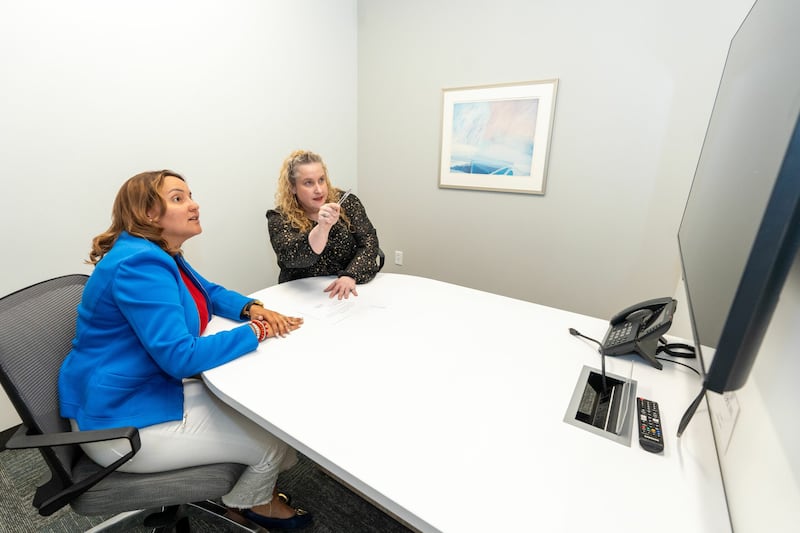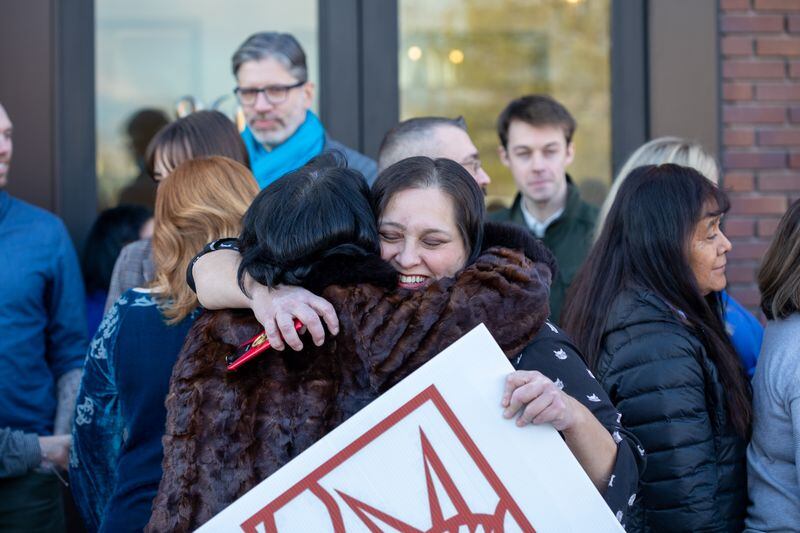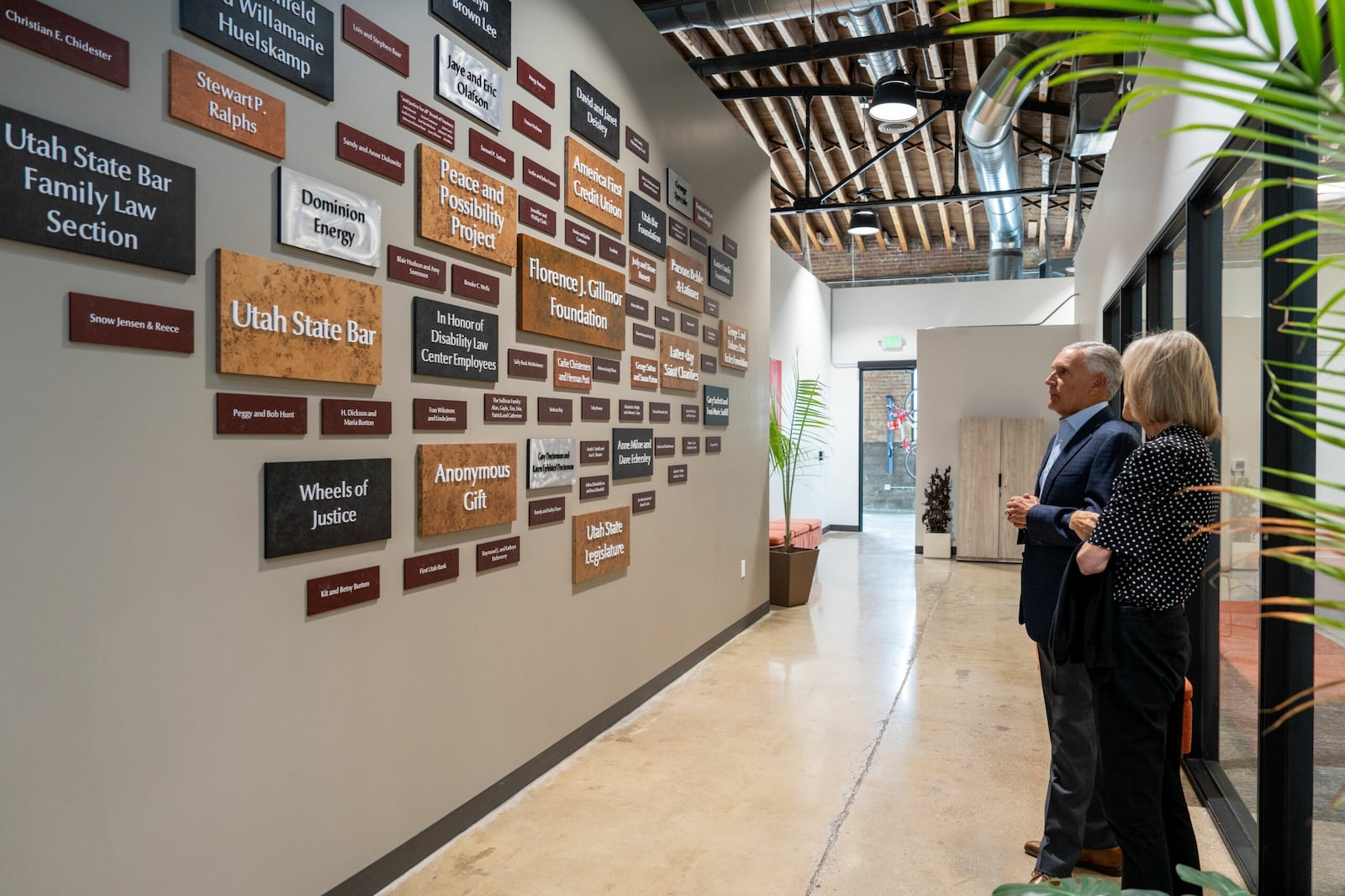This story appears in the June issue of Utah Business. Subscribe.
For Elena, a Utah resident whose name has been changed for safety, getting adequate legal aid was no longer about finding refuge in the law. It had become a matter of life and death.
A longtime victim of domestic violence, Elena reached out to the Legal Aid Society of Salt Lake in a desperate bid for protection. The Legal Aid Society, one of three organizations within the collaborative nonprofit “And Justice for All” (AJFA), provides services to countless individuals who can’t afford legal services on their own.
That demographic is skyrocketing in Utah. In 2023, the “justice gap” between outstanding legal needs and accessible aid resulted in 89 percent of civil defendants choosing self-representation, according to Nathanael Player, the director of the Utah State Courts’ Self-Help Center and Law Library. About 65 percent of Utah attorneys charge over $150 per hour.
While several local organizations are rising to the challenge, their efforts to address the legal gap pose a pressing question: Where is all the legal talent? If Utah is growing at such an explosive rate, why haven’t its affordable legal services scaled accordingly?
A legal market in flux
Utah’s legal market is in transition. With the state’s growth catching national attention, several large national firms have made forays into the local legal scene, bringing vast resources with them. As such, Sam Gardiner, the emerging companies and M&A partner at Mayer Brown, says local rates are changing to recruit attorneys from around the country.
“Salt Lake was always around two or three [points] below what [legal professionals] could get paid in San Francisco or New York or Chicago,” he says. Now, local firms are raising wages — resulting in more expensive legal services.
Jenna Hatch, partner at Pearson Butler, sees the local population boom as another side to the story. “We’re experiencing the legal industry version of the housing crisis, where we are actually struggling with a labor shortage,” she says. “There’s an [increased] demand for consumer-level legal services, and there’s not enough bodies to fill those positions. … That’s not going to stop. It’s going to compound.”
While innovations can address some of that labor shortage, the practical costs of discounted legal services have a limit. “We do everything we can around the structures. We do everything we can for free. We do everything we can with technology,” says Amy Sorenson, partner at Snell & Wilmer. “And at the end of the day, a lawyer really helps, and there just isn’t a substitute.”
Quality attorneys come at a cost, and the state may need to help foot the bill. “It may be that we have to … partner with the legislature to come up with something where there’s some support for low-income legal representation,” Sorenson says.

Legal solutions for Utah’s most vulnerable
The legislature has indeed been coming up with something. The Utah Office of Legal Services Innovation, also known as the Legal Sandbox, was instituted by the state in August 2020 to create “a well-developed, high-quality, innovative, affordable, and competitive market for legal services.”
The Legal Sandbox circumvents traditional barriers to offering legal services by allowing nonlawyers to own or invest in new legal service providers. Under the direction of the Utah Supreme Court, the Legal Sandbox is poised to shake up the local legal scene by providing “alternative legal providers” to close the legal gap.
Nongovernmental entities have also sprung into action. In addition to a host of nonprofits like AJFA, think tanks have cropped up, like Brigham Young University’s LawX, which designs tech platforms to accelerate legal assistance. Some of its platforms, like SoloSuit, have helped hundreds of thousands of clients address legal needs.
Similarly, Utah-based Innovation for Justice (i4J) — described by Director Stacy Rupprecht Jane as a “neutral design hub” for legal needs — “expose[s] inequalities in the justice system and create[s] new, replicable, and scalable strategies for legal empowerment.”
“Our work in Utah is helping to position nonprofits into the Sandbox so that they can provide legal services as part of social services, even if they do not have lawyers on staff,” Rupprecht Jane says.
When asked about i4J’s focus on the legally vulnerable, she reaffirms the need to address that gap. “Those are the areas with the highest unmet needs … where inability to secure legal help or navigate the legal system causes massive harm … losing their home, staying in an unsafe family situation, or experiencing the crushing debt cycle.”
The long road to legal reform
Elena was able to get the help she needed from AJFA. The nonprofit’s collaborative environment ensured Elena received adequate counsel to escape her domestic situation.
Closing the legal gap for individuals like Elena is still a distant goal, but Utah’s efforts form part of a rising tide of community-driven legal reform. Rupprecht Jane says that i4J “is just one player in the community-based justice worker movement — similar efforts are underway in other states.”
What does that look like here in Utah? Staci Duke, executive director of AJFA, describes their efforts to build up the local nonprofit legal community. Duke says, “We take 10 percent of the money we raise from the legal community and pass that on in a grants program. Last year, we [helped fund] seven other legal organizations that are a lot smaller but which help plug the justice gap.”
And they’re still not done — not by a long shot.
“Yes, we’re making inroads,” Duke says. “But there’s still so much we need.”


